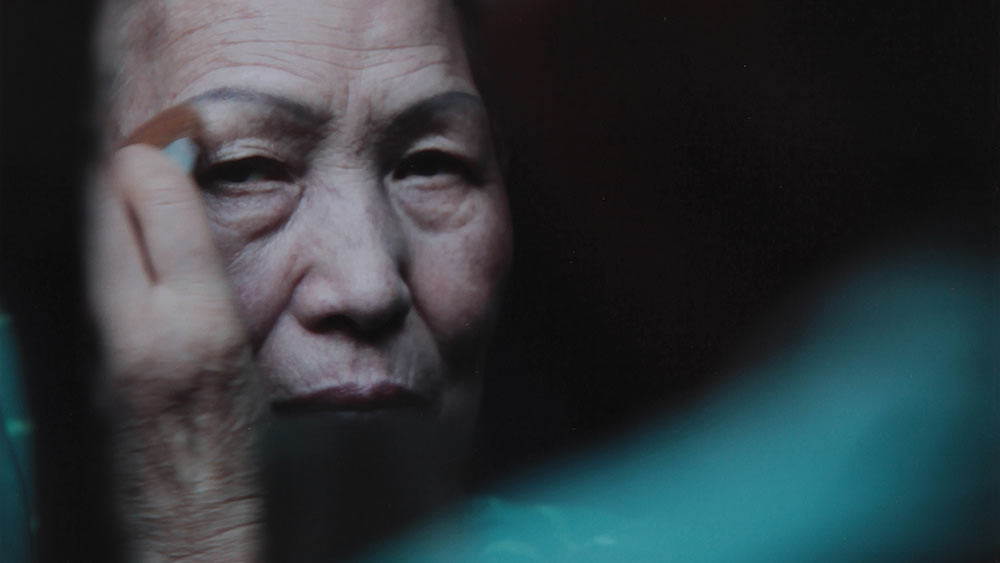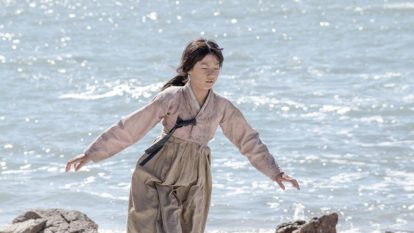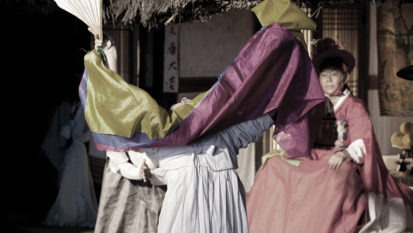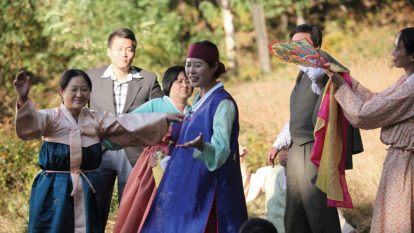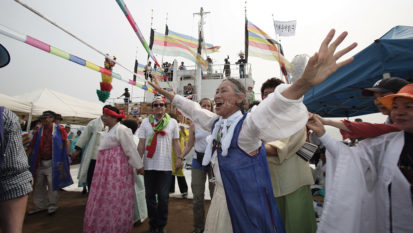An excerpt from Pagyeong
(End of Sutra Recitation)
Kim Keum-hwa
…
When the Sun and the stars, the Moon and the stars descend,
when in the east the Blue Emperor Earth Spirit descends,
when in the south the Red General Earth Spirit descends,
When in the west the White Emperor Earth Spirit descends and when in the north the Black Emperor Earth Spirit descends,
When in the center the Yellow Emperor Earth Spirit descends — that is when all the Earth Spirits of the Five Directions descend.
…
A hobbling one-legged ghost who lights the lamp in the shade of the blue willow.
If one is killed with a gun, one becomes a murdered ghost, if one is killed with a knife one becomes a ghost who died from steel.
Totter totter, an unmarried ghost, with no children and no
grandchildren is a ghost who won’t be recorded in the household registry.
A ghost of one who died beaten to death with a bamboo spear because he committed a crime against the people of the world.
Some silly bitch had the good luck to choke to death on yeot candy which she bought with rice she sold without telling her mother-in-law,
And became a ghost when she choked on the candy and died splattering her diarrhea on a brush mat.
All of you ghosts, eat and go away, then I will also partake and go away.
Eat moist food and go, take the dry food with you and go.
The women will put the straw coils on their heads and carry the food away, and the men will gather food into sacks and carry the food away.
I pray that your wishes may be fulfilled.
Gods, Ghosts, Ancestors, and Han: Managing the Resentful Dead
by Hank Glassman
“Totter, totter, an unmarried ghost, with no children and no grandchildren is a ghost who won’t be recorded in the household registry.”
— excerpt of Pagyeong (파경 罷經) (sutra closing verse and envoi)
Adam Bohnet, trans.
In East Asian societies, where a Confucian view of kinship as a line of generations of male descent holds sway, procreation and family membership have long been essential for religious salvation. The ideal in Korea and elsewhere has been that men and women find a place in a genealogy through the birth of a son and thus bind themselves in the eternal embrace of family beyond the threshold of death. Male family members join the linked chain of ascendants. Women are folded in from the outside, transforming themselves in the natural course of events into the mothers of ancestors in their husbands’ families.
This patrilineal genealogy transcends the world, transcends death. This is the traditional and accepted vision of the happy dead within the orthodox vision of Buddhist and Confucian ancestral cult of East Asia. The “household registry” mentioned in the quotation above represents this model of patrilineal forebears as the key to repose for the dead, and to blessings and good fortune for their survivors. Unmarried daughters, the sonless sons, and those disowned by their families are beyond salvation.
The mudang 무당 (shaman, usually female) offers an alternate perspective. She directly engages unsettled spirits, many of them from the mother’s side. While the family recognized by the state and by Confucian ideology is the world of agnates (that is, patrilineal relatives), the manshin 만신 万神 (another term for shaman, literally “10,000 spirits”) discovers in her séances many others, with figures from the distaff side appearing more frequently than those from the father’s line. The shaman sutures up the disaffections and longings that transcend kinship.
The dead who feel abandoned and disrespected are bound to cause trouble for the living, crying for resolution of the grievances that keep them from crossing over from this world to the next. The purview of the manshin is the realm of missed connections, tangled emotions, and frustrated hopes. When the unhappy dead make their presence felt, it is through troubling and traumatic events in the lives of living relatives. The Korean word for the preternatural force that animates these inchoate dissatisfactions, grudges, resentments, is han 한 (“rancor”).[1]
The most important function of the manshin in Korean religious life is to care for the dead who are not at rest and thus create a web of meaning and belonging for those whose loss cannot be tied up neatly within the ancestral cult. An important line to draw here is the one between the officially mournable — those who are connected to a surname as a son, wife, or father — and those whose deaths somehow lie beyond. As Judith Butler writes in a different context, “If a life is not grievable, it is not quite a life; it does not qualify as a life … It is already the unburied, if not the unburiable.”[2]
The practice and performance of the mudang ritual, ostensibly aimed at keeping the dead from impinging upon the living, exists primarily as an ancillary to the orthodox and proper ancestral cult. The subjects of shamanic ritual, the dead who must be appeased and sent away, are the ghosts created by (often unseen) violence and injustice. The sudden death, the suicide, the person who fails to reproduce — these represent the end of some future that could have been, an interrupted story, a word caught in the throat. It is this rupture that lies at the heart of matter.
The gut 굿, the shaman’s séance, mends rifts across generations, puts things right between siblings or cousins, and heals open family wounds that create pain in this world and the next. In this way, the ritual intervention aimed at bringing into presence the unhappy, han-filled dead, so that they can lament their loss and bring their grievances to light, is just as much a balm for the living.
The rites of burial, ceremonies that lay the dead to rest, do the work of restoring community after a loss. Human bonds do not end at death, and the more fraught the relationship in life, the more likelihood there is for haunting. This haunting is, after all, an appeal for a rapprochement. It represents a desire for connection, even from beyond the grave. As Thomas Laqueur writes, ghosts are those who “bear witness to the porosity of the border between nature and culture: spirituous bodies and voices of bones and ashes that cross a seemingly unbridgeable chasm.”[3]
The metaphor of the bridge — spanning the “seemingly unbridgeable chasm” — is a central one for the mudang. One of the most prominent rites performed by the Korean shaman is the dari gut 다리 굿 (“bridge rite”), in which she unfurls a long, white bolt of cloth called the siwang dari 시왕 다리 (“bridge of the Ten Kings”). The Ten Kings are the judges of the dead in East Asian Buddhist Hell, and in this ceremony the shaman sings and dances the dead along this white hempen bridge out of the infernal underworld and into the Paradise of Amitabha Buddha. Toward the end of the ceremony, the shaman marches forward through a small tear in the cloth, using her body to rip it into two halves, thus preventing the return of the soul across this bridge and leaving the now peaceful dead to their eternal rest.[4]
Chan-kyong Park’s film Manshin will screen Wednesday, April 7th at 7:00pm at the Bryn Mawr Film Institute as part of the The John B. Hurford ’60 Center for the Arts and Humanities Strange Truth Film Series.
- For an insightful investigation of the meaning and dynamics of han, see Heonik Kwon, “The Wealth of Han,” in Sentiments doux-amers dans les musiques du monde délectations moroses dans les blues, fado, tango, flamenco, rebetiko, p’ansori, ghazal, edited by Michel Demeuldre (Paris: L’Harmattan, 2005), 46-55. ↑
- Judith Butler, Precarious Life: The Powers of Mourning and Violence (New York: Verso, 2006), 34. ↑
- Thomas Laqueur, The Work of the Dead: A Cultural History of Mortal Remains (Princeton: Princeton University Press, 2015), 65. ↑
- For more on the bridge rite, see Chungmoo Choi, “The Artistry and Ritual Aesthetics of Urban Korean Shamans,” Journal of Ritual Studies 3 (1989), 235–49. ↑
